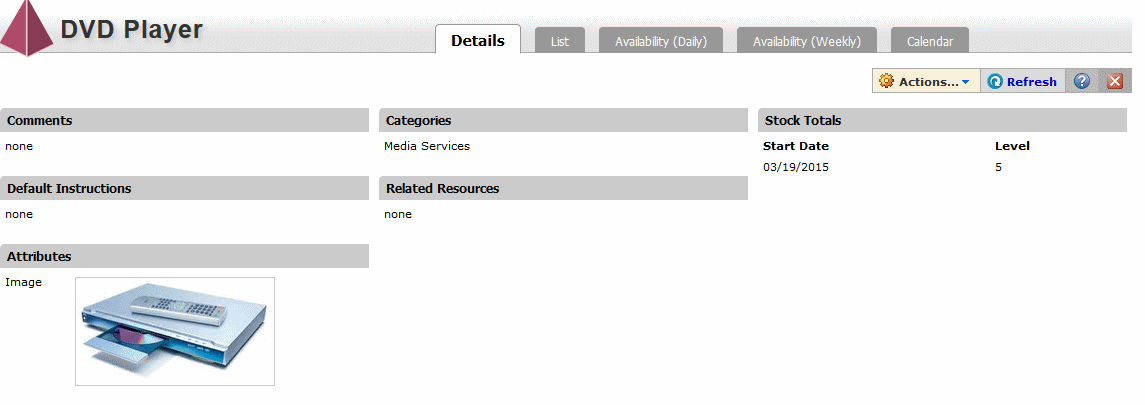Resources Data Administration
Resource data
Definition of resource
The term resource refers to any equipment, service, personnel, supplies, or other item that could be assigned to an event. It includes items not already present in locations.
This could include... | Such as... |
Equipment | • Audio visual equipment • Laboratory equipment • Vehicles |
Services | • Food Services • IT Support • Maintenance • Physical Plant/Facilities |
Personnel | • AV Techs • Security Officers • Custodians |
Supplies | • Catered items • Conference materials • Tables and Chairs |
One or more resources can be assigned to all or selected occurrences of an event, and specific resources can be set up to be automatically decremented when assigned.
Difference between resources and requirements
Resources
Resources are event needs, such as equipment, services, and personnel, that are relevant to all or selected occurrences of an event. For example, a scheduler might assign a projector to just the first occurrence of a history class, but not to the other class meetings. Only resources can be set up to be automatically decremented when assigned to events.
Requirements
Requirements are event needs that are relevant to the event as a whole, such as a parking permit for an extension class, an alcohol permit for a theater reception, or a “Publish to Special Events Calendar” for a play. Requirements are often arranged well before an event takes place and aren’t specific to a date or time. They are defined in the Event Requirements (Calendar) and Event Requirements (Other) master definitions as described in
“Event master definitions” and can be set up to be displayed based on event type as described in
“Associating reports and data properties with event types”Resource example
This is an example of a resource as it appears in 25Live. The resource data was entered and the photograph selected in the 25Live Administration Utility when the resource was created.
Types of resource data you can store
You can store a variety of information about each resource:
• Name (required)
• Comments
• Default setup instructions
• Categories the resource belongs to
• Attributes—any other resource data you want to track

